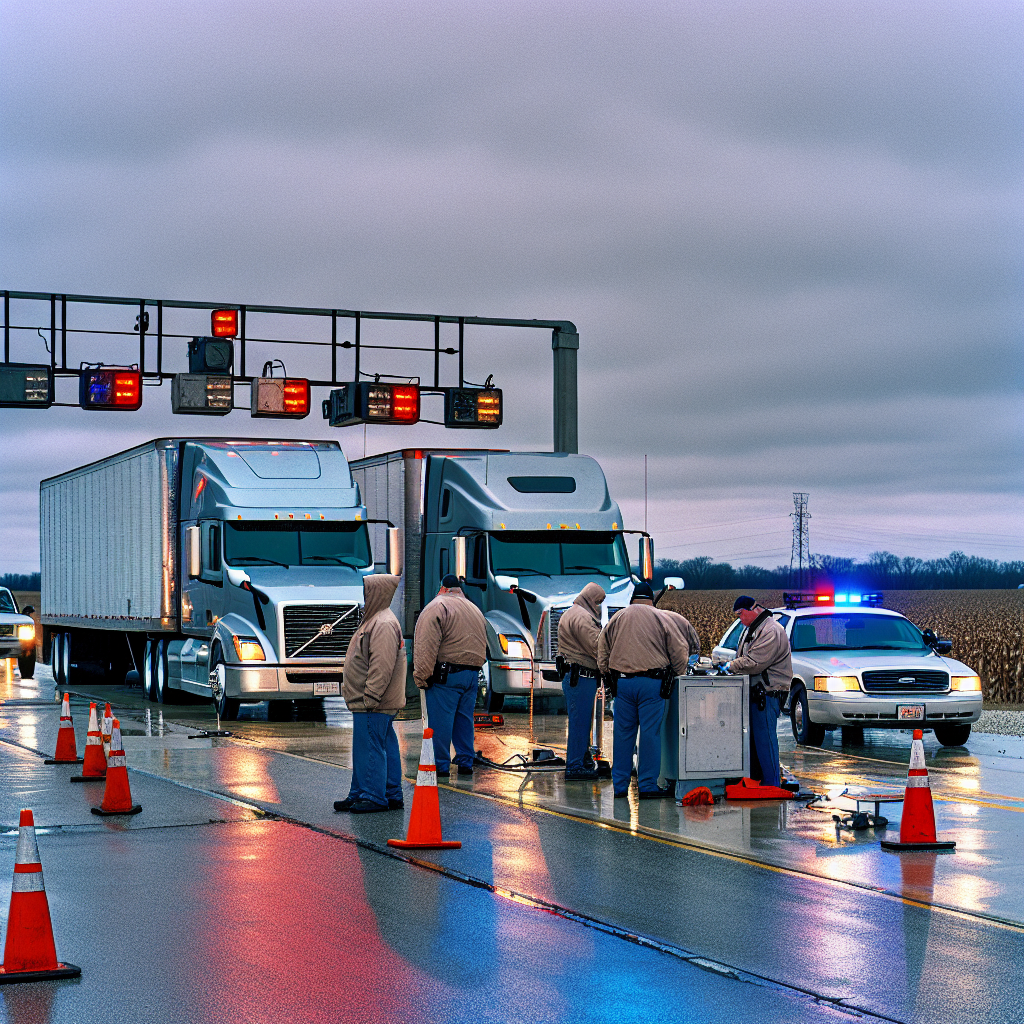U.S. Transportation Secretary Sean P. Duffy is moving from rhetoric to enforcement against “CDL mills” and trucking outfits he says are cutting corners on basic driver qualifications — a push spotlighted in FreightWaves’ coverage and amplified by new federal actions targeting training providers, carriers and even shippers that load trucks driven by unqualified operators. ([]())
In a media blitz on October 31, Duffy said DOT and its motor carrier agency will “go after” schools that churn out minimally prepared drivers and scrutinize companies that hire operators who lack lawfully issued CDLs or cannot communicate in English. He also warned shippers they could be pulled into enforcement if they load freight onto rigs operated by such drivers. Newly confirmed FMCSA chief Derek Barrs backed the stance, calling entry‑level training “where safety truly begins.”
The tougher posture coincided with an immigration enforcement surge on key Midwest corridors. DHS Secretary Kristi Noem announced that a Chicago‑area operation extended into Northwest Indiana netted 223 arrests, including 146 truck drivers, with state troopers assisting at weigh stations along I‑94. Local stations in Indiana confirmed the totals and noted that more than 40 of the truckers held CDLs from sanctuary states.
For fleets, the headline isn’t just immigration enforcement — it’s the widening safety lens. Duffy linked the Indiana raids to DOT’s broader initiative to tighten licensing and training oversight, including a months‑long audit of state CDL programs and a promised clampdown on “mills” exploiting entry‑level driver training rules. He also reiterated he’s prepared to withhold tranches of federal money to force state compliance and, if necessary, restrict a state’s CDL authority.
California remains ground zero in the policy fight. Duffy has already frozen tens of millions in federal safety funds over what DOT says is non‑enforcement of English‑language requirements and improper issuance of non‑domiciled CDLs. While California officials have resisted parts of DOT’s demands, a newly surfaced state response acknowledged some errors but stopped short of revoking tens of thousands of licenses — a stance that sets up further confrontation with Washington.
Why this matters to trucking now: enforcement is moving upstream. The Overdrive briefing makes clear DOT intends to police not just drivers but the entire ecosystem that puts them on the road — training programs, motor carriers and shippers. That raises practical exposure for anyone touching freight: due diligence on a driver’s lawful status and English proficiency no longer looks like a nice‑to‑have; it’s table stakes. Expect more joint operations at weigh stations, targeted audits of training records, and follow‑the‑money tactics that leverage federal grants to press states into line.
Operational takeaway for carriers and shippers: start documenting what you already expect from drivers. Keep copies of ELDT completion records from approved providers, verify CDLs are valid and lawfully issued before dispatch, and confirm drivers can communicate in English for safety‑critical interactions. Shippers should build simple checklists at the dock — e.g., load instructions confirmed verbally in English and basic HAZMAT/securement questions for applicable loads — to avoid being the weak link regulators say they will target. These steps align with the enforcement priorities DOT and DHS described this week and can be implemented without slowing freight.
Market implications: near‑term capacity shifts could be regionally sharp rather than nationwide. Indiana‑Illinois corridors and California lanes are most likely to feel pinch points first as roadside and back‑office scrutiny intensifies. If DOT follows through on penalties and program audits, carriers with rigorous training partnerships and clean qualification files could gain bid leverage, while fleets tied to questionable schools — or lax onboarding — risk disruptions as drivers are sidelined pending re‑verification.
The bottom line: Washington is fusing immigration and highway‑safety enforcement in a way the industry hasn’t seen in years — and it’s happening at the weigh station, in state DMV databases, and across the shipping dock. Whether you’re a school, a carrier, or a shipper, the cheapest time to prove your compliance is before the inspector asks.
Sources: FreightWaves, Overdrive, WNDU (NBC South Bend), WISH-TV (Indianapolis), WRTV (ABC Indianapolis), Truck News, CBS Chicago
This article was prepared exclusively for TruckStopInsider.com. Republishing is permitted only with proper credit and a link back to the original source.





